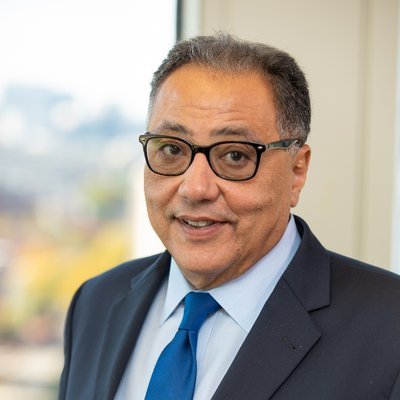NAIROBI, Feb 15 (IPS) – As the effects of climate change escalate and natural disasters such as earthquakes, floods, and droughts become more frequent and severe, threatening lives and livelihoods, humanity is losing the climate battle.
A sharp decline in the variety and the number of both wild animals and species, severe food insecurities, high levels of malnutrition, disappearing streams, springs, and rivers in some areas, and dangerous rises in sea levels that threaten island nations are alerting the world to a climate-driven catastrophe.
Yet even as the world stares at unprecedented climate disasters, experts such as Hafez Ghanem caution that existing international institutions are not delivering on climate change mitigation and finance and are now calling for renewed efforts through the establishment of a Green Bank.

Ghanem, former regional Vice President of the World Bank Group and a current nonresident senior fellow in the Global Economy and Development Program at the Brookings Institution, Senior Fellow at the Policy Center for the New South, and Distinguished Fellow at the Paris School of Economics tells IPS that “the creation of a Green Bank as a new international institution to solely address climate change adaptation and mitigation efforts is long overdue.”
“Everybody is looking at how to finance investments in climate change. The estimate is that USD 2 trillion is needed every year for countries in the global South alone to address climate change.”
Today’s development assistance, he says, is about USD 200 billion per year, “so we need to multiply that figure 10-fold and only use the funds for climate change and forget about critical social sectors such as health and education.”
Choosing the climate agenda over critical social sectors or vice-versa is a lose-lose situation because they are both matters of life and death. This has led world leaders to a critical crossroads.
To meet the climate financing gaps, Ghanem says many of the developed countries are asking existing multilateral development banks, such as the World Bank, to reform and invest more in climate change.
Ghanem says reforms within existing institutions will not work and recommends a different approach: the establishment of a singular international institution that concerns itself solely with climate-related matters. An institution that would be a repository for global knowledge on climate change and advice governments on climate policies.
He says a Green Bank would also develop green projects across the Global South and support their financing and implementation. As currently constituted, multilateral development banks are yet to open up space for Global South to be heard at the same level as those in the North.
At the World Bank, for instance, he says, the voting power is such that the G7 countries control 39.8 percent of the World Bank while other donors control another 14.9 percent.
“Despite the World Bank conducting most of its business in Africa, the largest ten African countries control only about 3.5 percent of its voting power. A development bank that is controlled by its borrowers is not a good idea; neither is a development bank where beneficiaries feel that they don’t have enough voice,” he expounds.
Ghanem further emphasizes that the absence of the private sector will continue to curtail efforts to raise much-needed funds. “I believe that the Green Bank should be a public-private partnership where private corporations, foundations, and civil society organizations are invited to participate in its capital together with sovereign states. I am calling for a tripartite approach where countries of the Global South have the same voice, same voting rights as those in the Global North and the private sector.”
The need to attract much-needed funds from the private sector cannot be over-emphasized, he says as it is now, “there is no voice from the private sector because the owners of, say, the World Bank and the African Development Bank are all sovereign states.”
The Green Bank would, therefore, primarily support private green investments through equity contributions, loans, and guarantees at the national, regional, or global level. The new institution would also free existing multilateral banks to direct scarce resources to social and development assistance.
This would significantly boost progress toward the delivery of critical social sectors services such as health and education, particularly in poorer, more vulnerable nations such as those classified as Least Developed Countries.
As such, the proposed Green Bank will not be in competition or opposition to existing multilateral banks but an instrument to partner with other institutions and complement their projects.
“Climate change is an external threat facing all of humanity, and all of humanity needs to unite to face it. But a major share of humanity and particularly the Global South lacks the necessary resources,” he says.
“There are many international meetings and summits at which resources are pledged, but the pledges are for much less than what is needed to deal with climate change. Moreover, not all pledges materialize as actual commitments and disbursements.”
As governments in the Global North face tighter budget constraints and competing interests, limiting their ability to provide much-needed finance for climate projects in the South even as climate catastrophes increase, Ghanem says a new approach in the form of a Green Bank that is a private, public partnership would be an important contribution to the solution. You can read his full policy brief on the subject here.
IPS UN Bureau Report
Follow @IPSNewsUNBureau
Follow IPS News UN Bureau on Instagram
© Inter Press Service (2023) — All Rights ReservedOriginal source: Inter Press Service
Check out our Latest News and Follow us at Facebook
Original Source